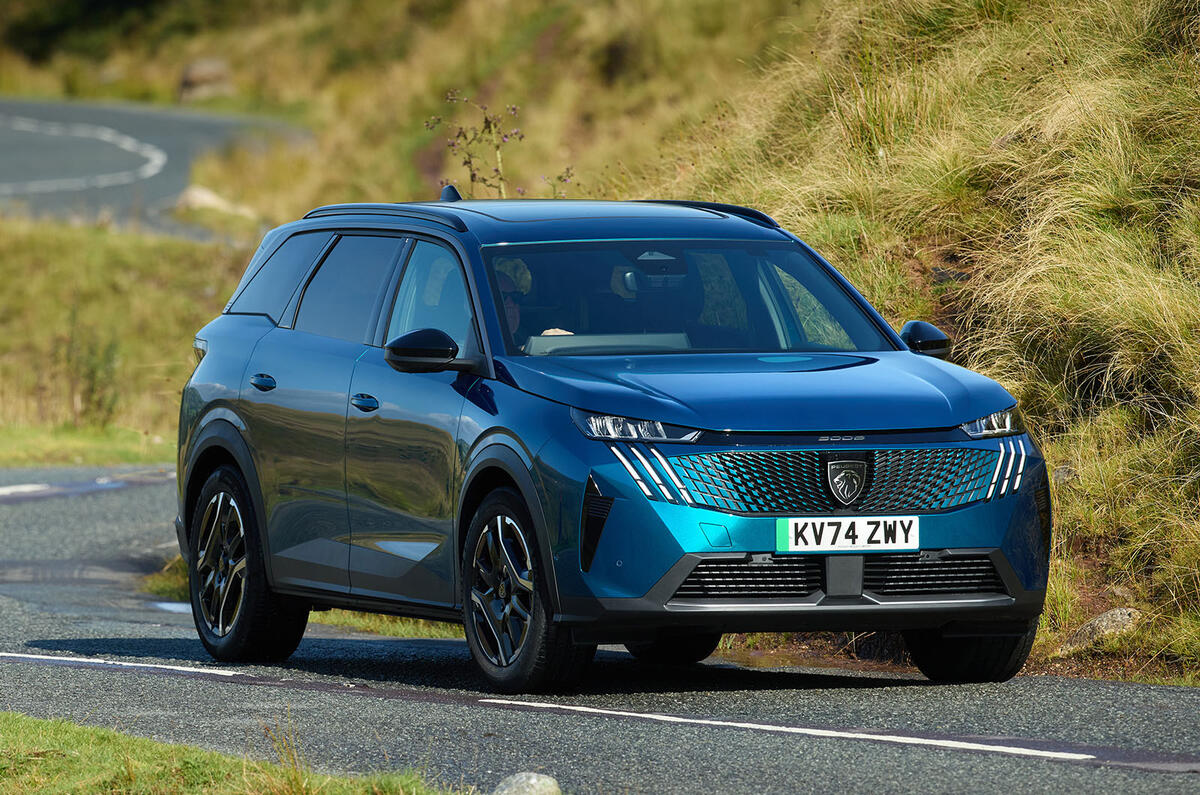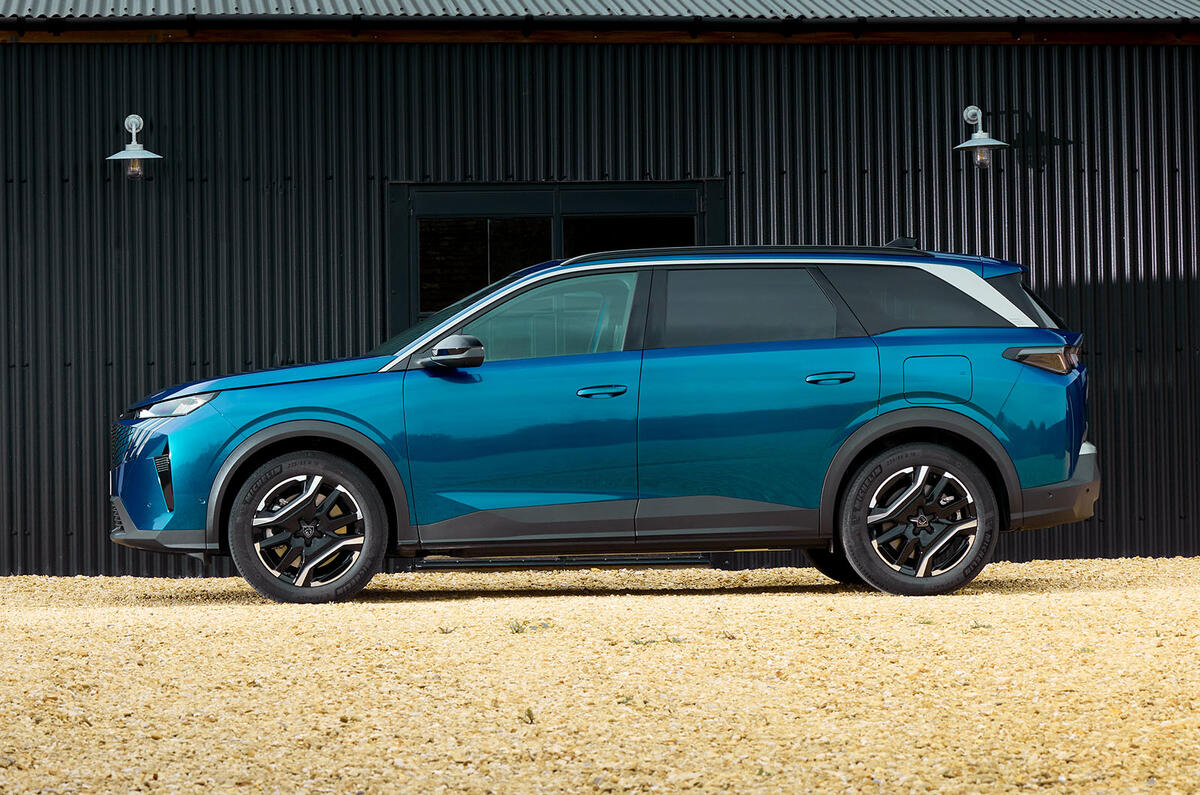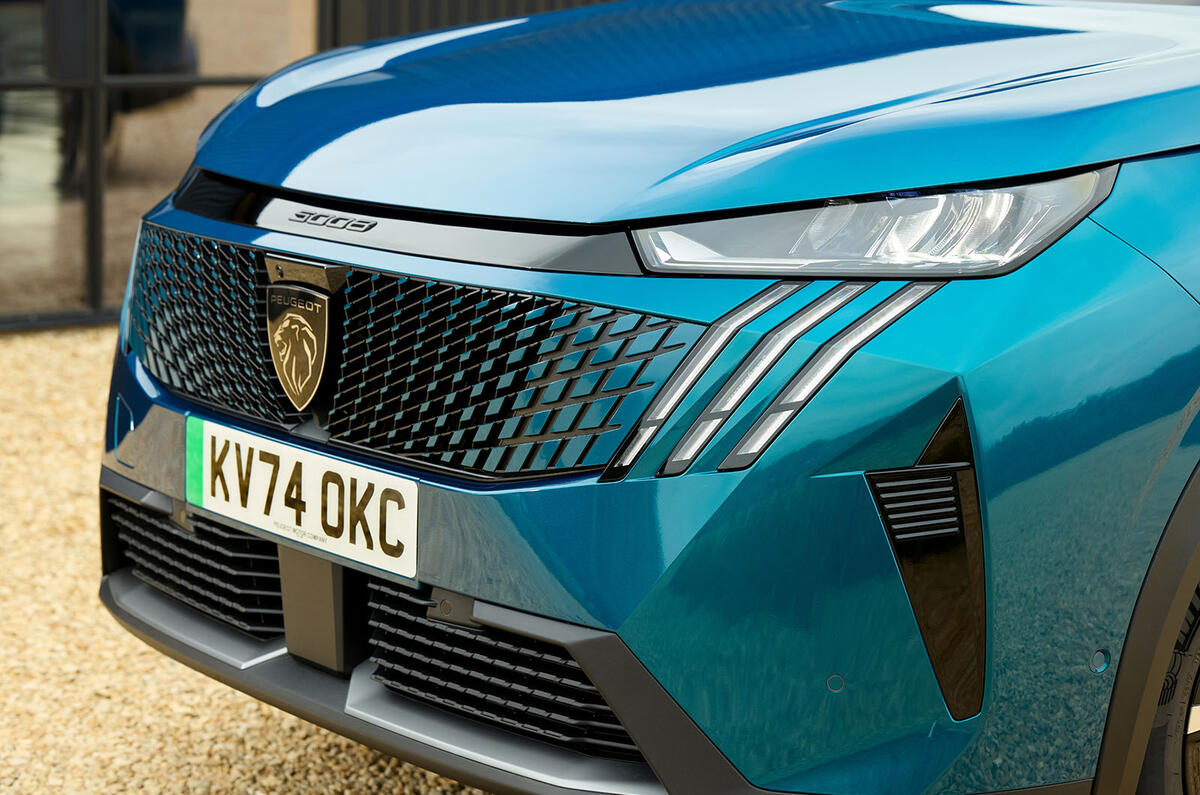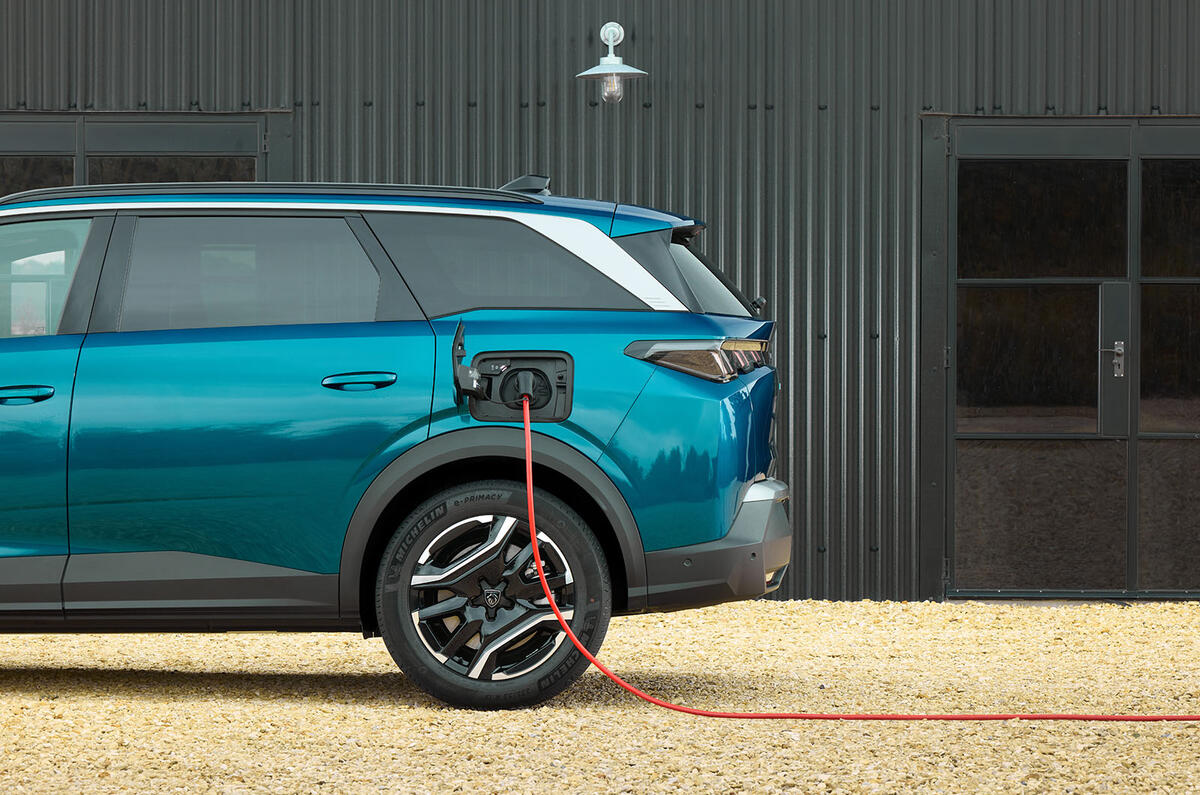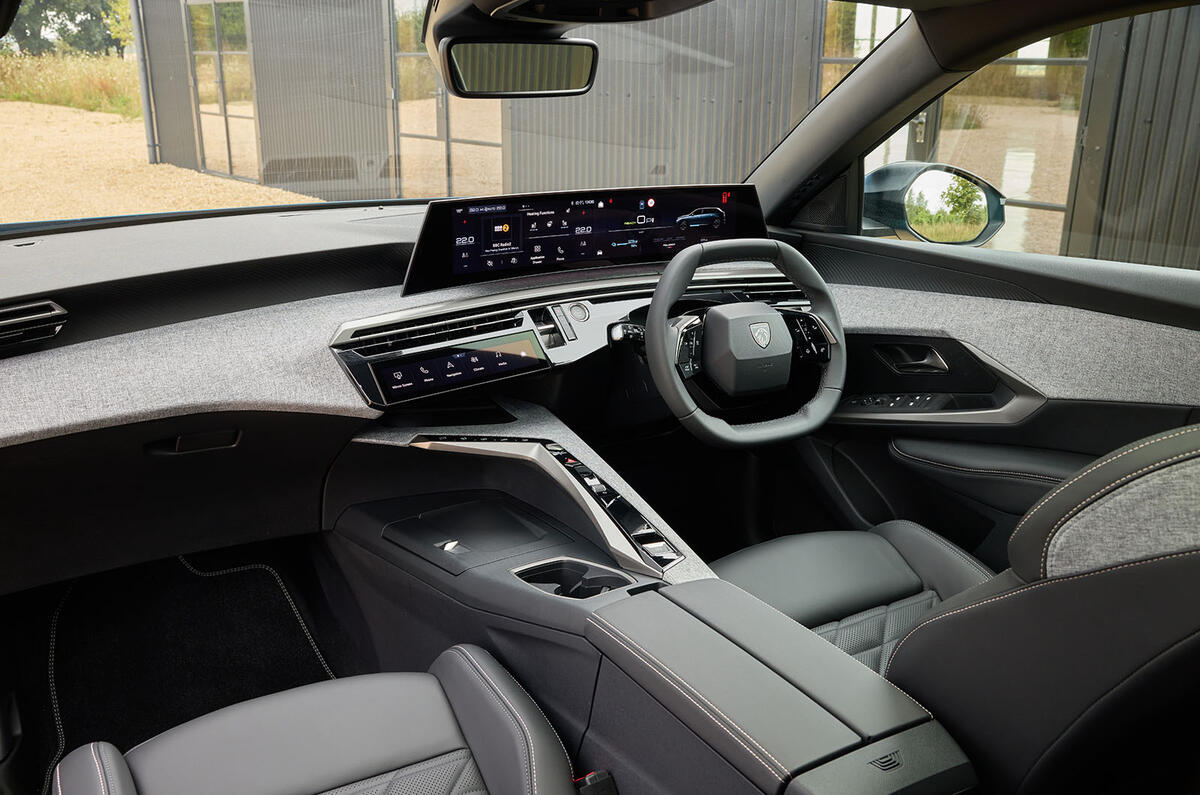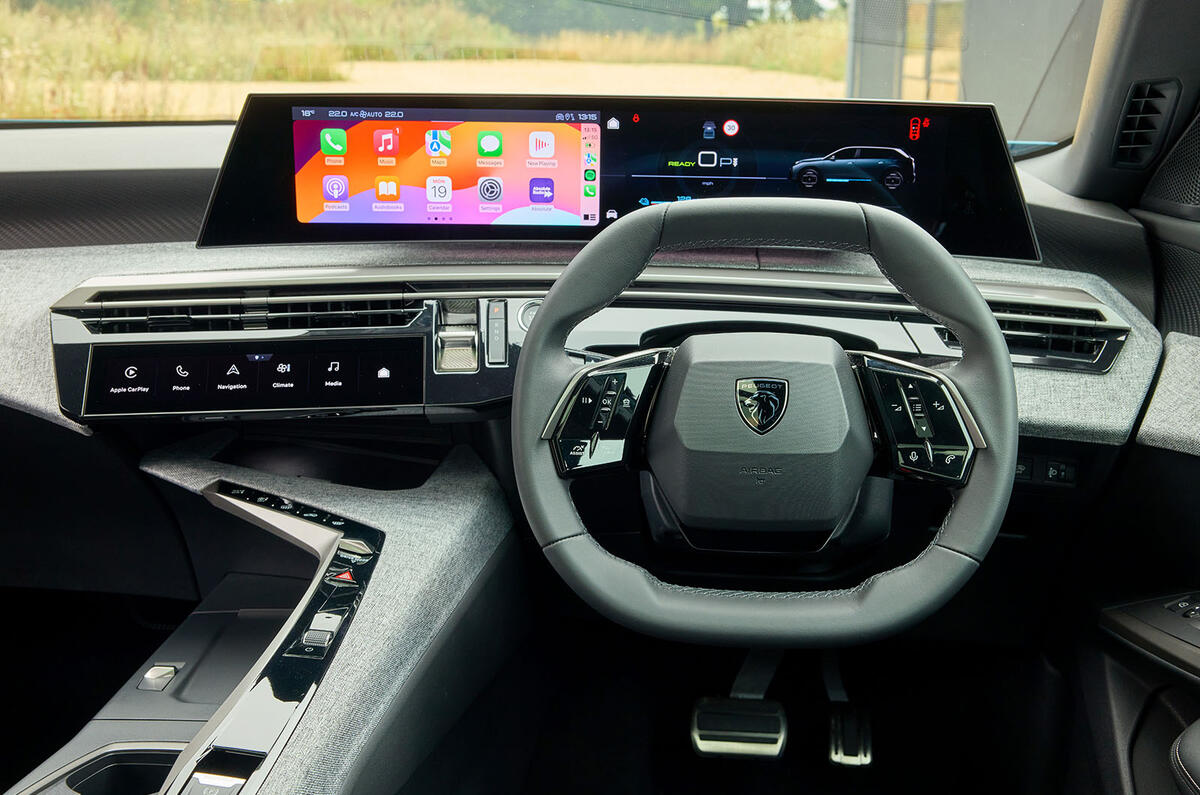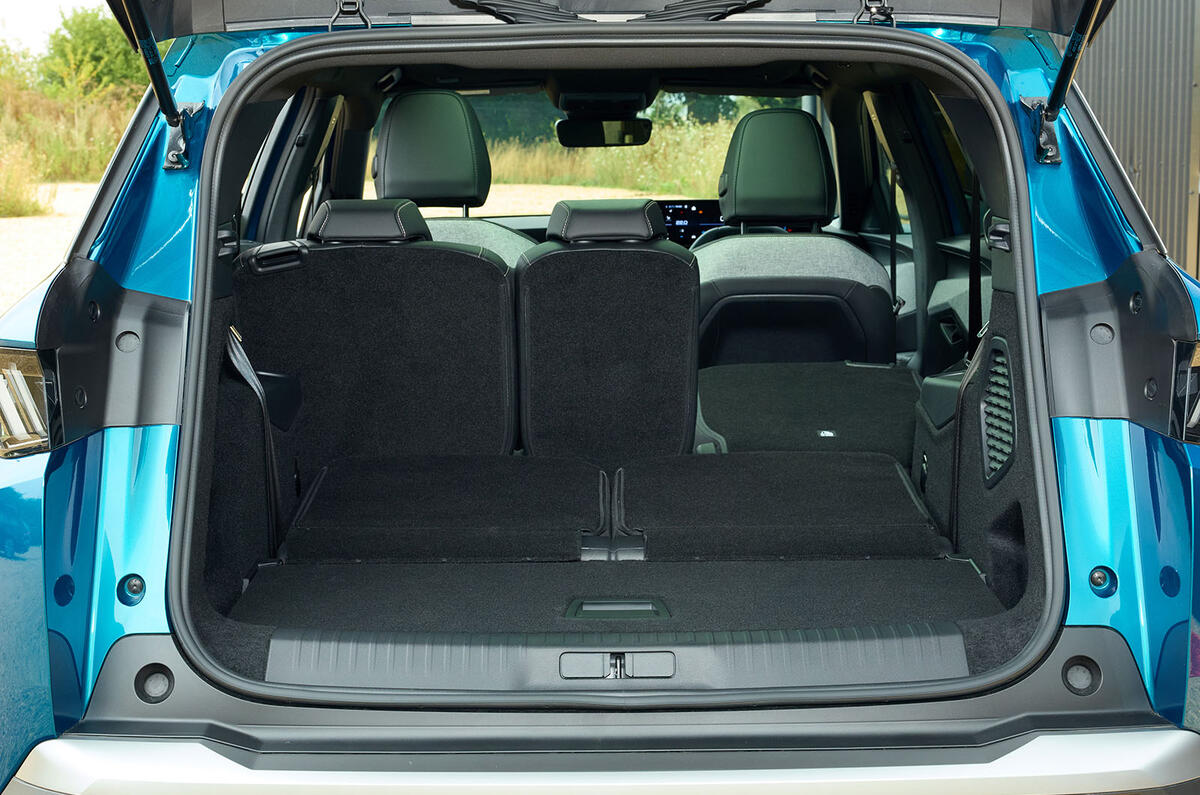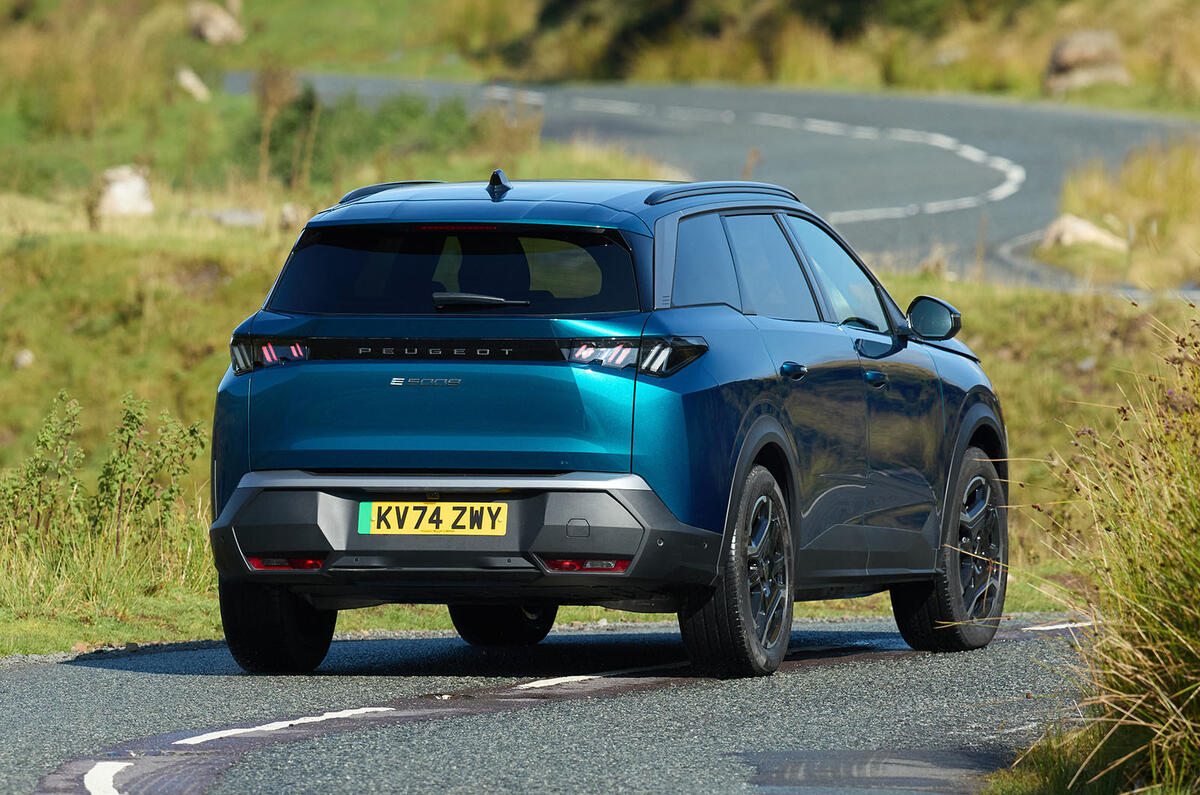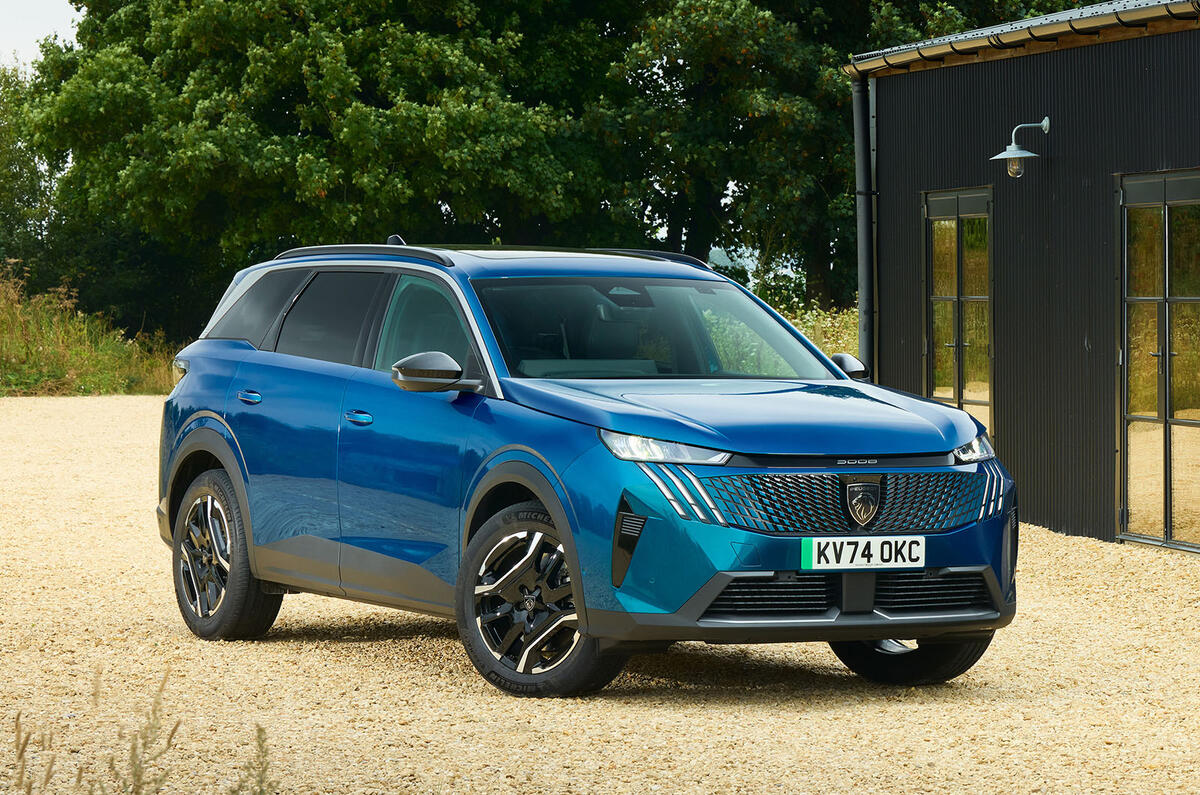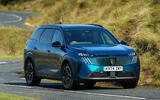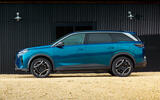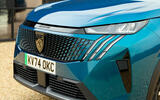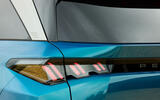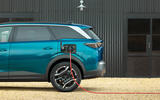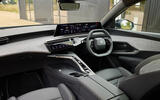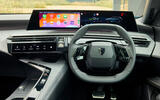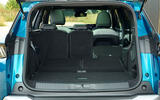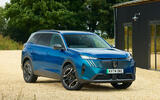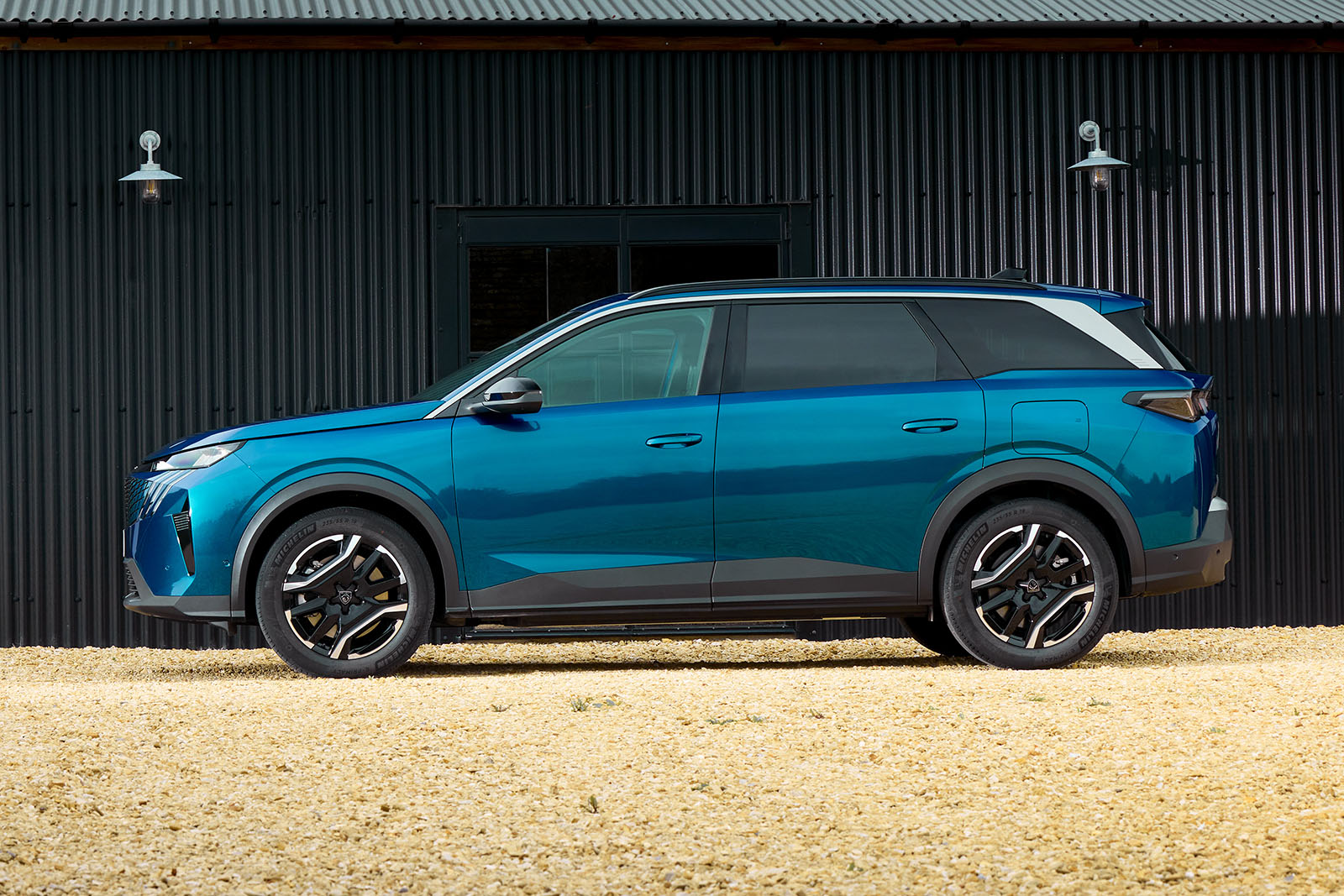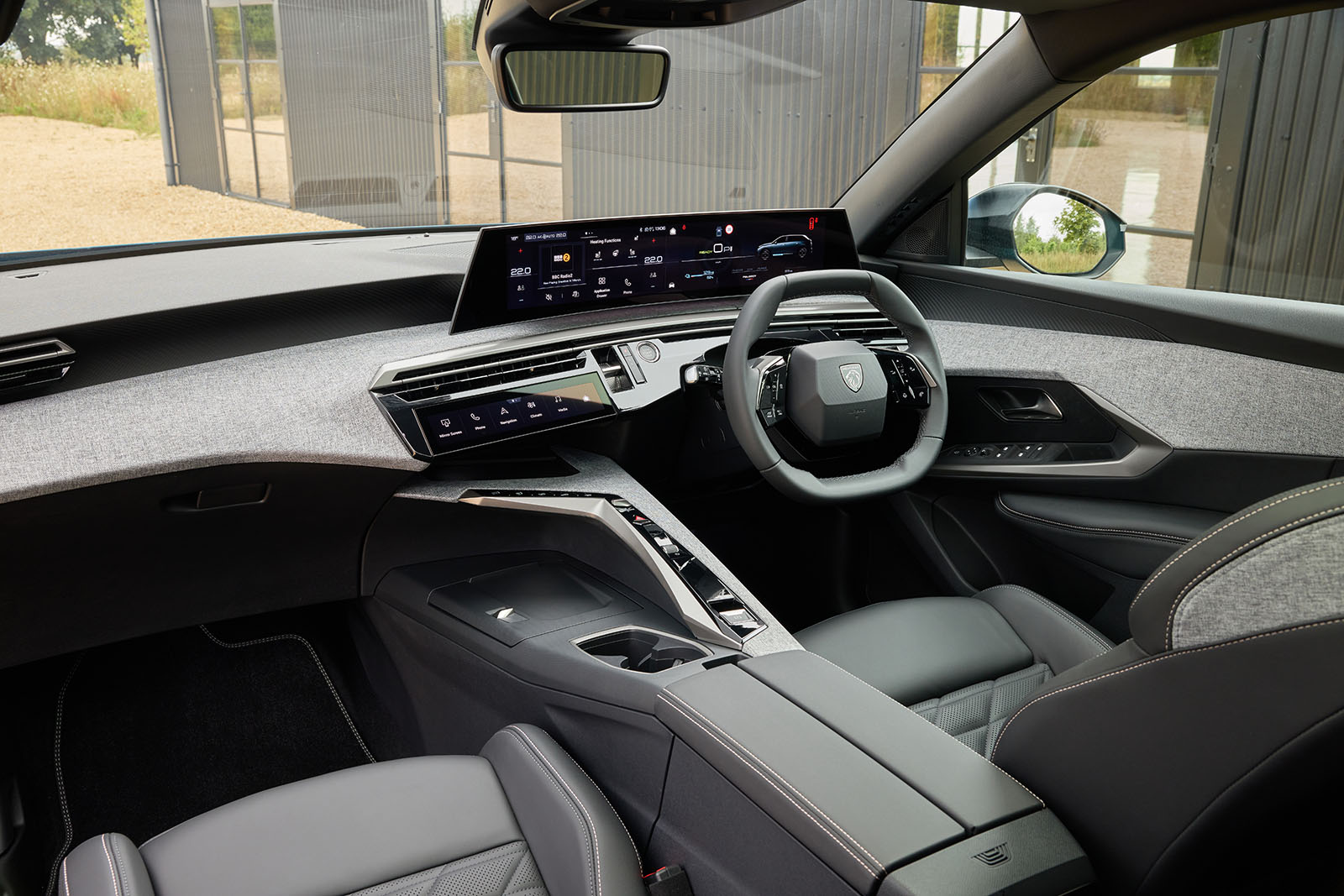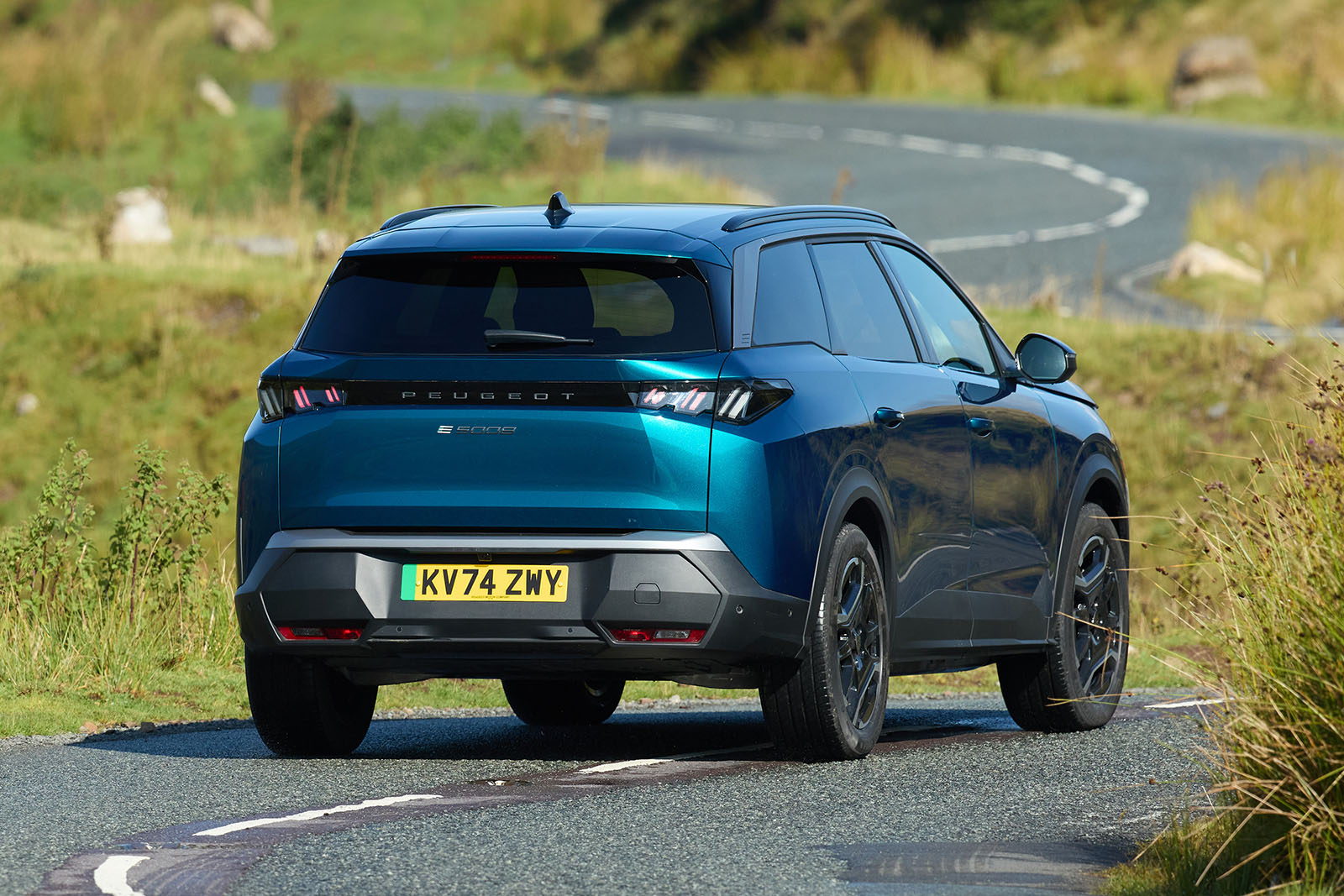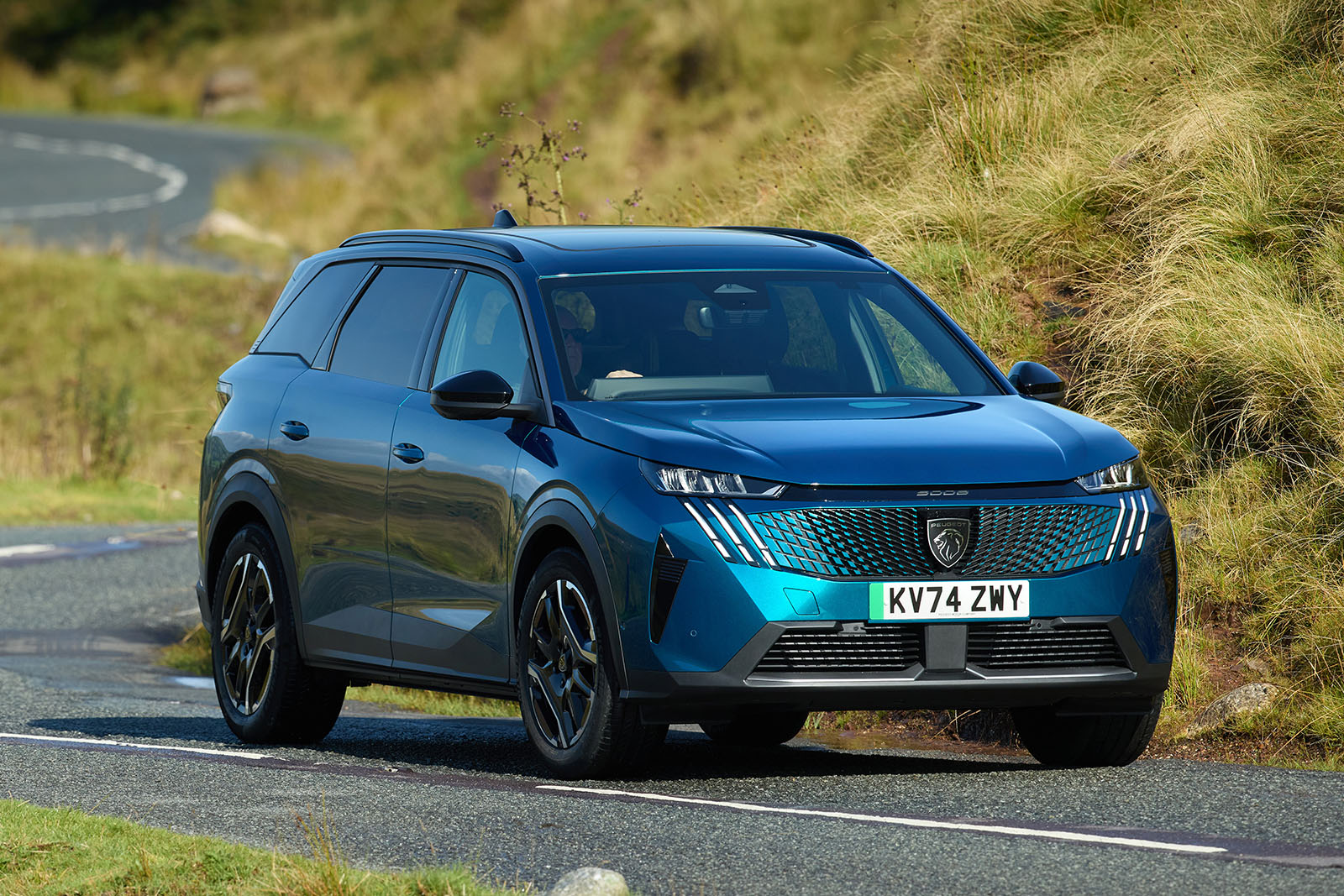We will start at the back of the e-5008, because it’s the space and versatility that’s really going to sell this car.
The boot release is hidden in an inconveniently small crevice in between the bootlid and bumper, which can make your fingers very mucky when you’re opening the boot. Inside, though, it’s a happier story, as you get 748 litres of boot space in five-seat mode, including some underfloor storage that’s suitable for your charging cables, and that also has fixings so that you can stow the load-bay cover securely out of the way.
It really is a properly big, spacious boot that will do just fine for your paddleboards, kayaks, kids bikes, buggies and dogs (although not quite all at once). The middle row folds and slides in a 60/40 split to leave an extended flat load area that gives you more than two metres of space, so that’s all good for when you have to pick up that dismantled shed that was a total bargain on Facebook Marketplace.
Just as impressive is that passenger space. The rearmost seats are best saved for the dexterous, as access is still a bit awkward, if better than in most seven-seaters, thanks to the outer-middle seats that tilt and slide forwards in one movement to give maximum space for clambering in.
An average-height adult in the third row will be okay for short periods, and shoulder, leg and head room are pretty good, but there are no air-con vents back there, nor charging outlets (there’s a 12V socket but no USB ports), just a small cupholder each, so it’s a bit sparse. It's still pretty comfy by mid-sized seven-seat SUV standards, though, and the seats fold flat easily when you don’t want them.
The middle row is spacious too, although anyone over 6ft tall may find head room at a bit of a premium if the car has the panoramic glass roof, as ours did. Still, there’s loads of foot and leg space, and head room is pretty good even if the car is fitted with a panoramic sunroof. What's more, there are standard climate control furnishings for this row of passengers and the sliding and reclining seats will keep kids happy.
Gone are the three middle-row Isofix fittings and three equally sized, individually sliding seats of the previous 5008. Peugeot maintains that greater comfort for the two outer passengers was more important for customers, who also want less of an MPV feel and more of an SUV feel.
Up front, the dashboard is taken straight from the e-3008, which means really smart materials and a structured look, with a ‘floating’ 21in panoramic display that houses the touchscreen infotainment system and driving information readout.
The configurable i-Toggle shortcuts lower down the dash are useful, and while the touchscreen layout may not be quite as intuitive as the system in the Renault Scenic E-Tech Electric (especially the fiddly in-screen climate controls), the tech interface and the driving position are both hugely improved over the previous 5008 and generally promise to be easy to live with.
The interior also feels solidly put together, and while you wouldn’t say this was up there with Audi, BMW and Mercedes-Benz for perceived quality, it will certainly make Ford, Kia and Renault pay attention.
The seats are comfortable too, although the manual seat adjustment feels clunky and cheap, given the high-end feel that Peugeot has striven for in other aspects.
Visibility isn’t bad for this class of car. Granted, the Skoda Kodiaq has a lower shoulder line and better view out to the back, but the e-5008 has an appealing, ‘proper’ SUV driving position that sits you high up and gives an imperious view down the road.





